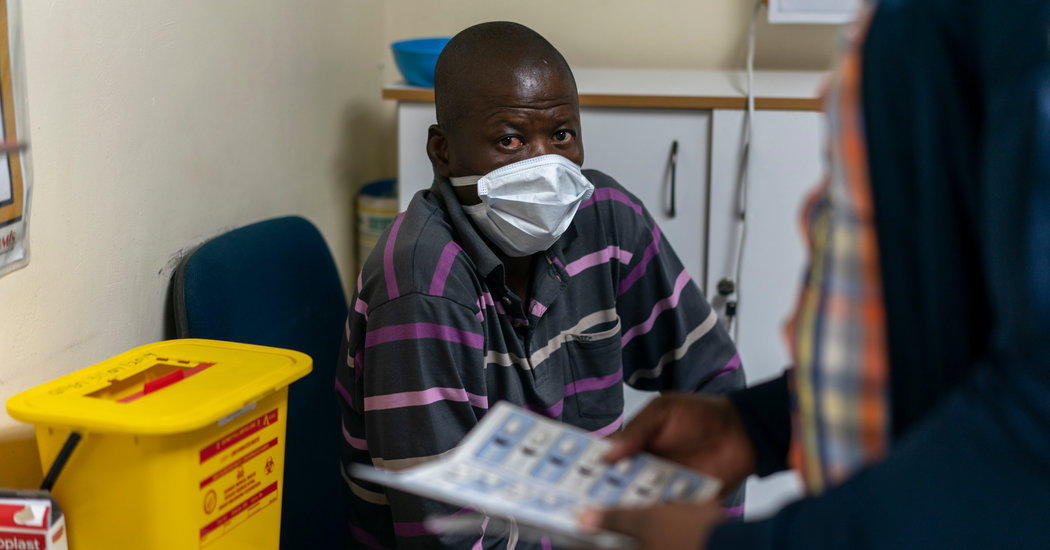
The hardest part of curing tuberculosis, doctors say, is getting patients to take all their pills every day for at least six months. Even the easiest regimens of four antibiotics can cause nausea, fevers, rashes and stomach pain.
Health officials have tried many ways to persuade patients to comply, from gentle encouragement to imprisonment in locked wards. Now researchers have come up with a new tactic: A program based on nagging cellphone texts succeeded in goading patients into taking their drugs in a preliminary test in Nairobi, Kenya, according to a study published on Wednesday in the New England Journal of Medicine.
Patients who were enrolled in the phone program experienced 68 percent fewer bad outcomes — death, treatment failure or loss of contact with the clinic — compared to patients who were not.
Programs that send one-way reminders telling people to take pills, use mosquito nets or get their children vaccinated are common in Africa, but they do not work very well. The new program, called Keheala and created by a company with the same name, asks patients each day to actively verify that they have taken their pills.
If they do, they are thanked and told where they stand in an “adherence contest” against other patients. A 90 percent ranking earns a spot in the “winners circle.”
If patients do not verify, they get more texts, then two phone calls. Finally, the clinic is alerted that a patient is not responding, which — in theory, at least — triggers further efforts by medical workers to find them.
Jon Rathauser, Keheala’s founder, said he developed the idea after watching a documentary about tuberculosis in the Solomon Islands.
The best adherence strategy, endorsed by the World Health Organization, is “directly observed therapy,” or D.O.T., in which patients are assigned trained caretakers and must swallow their pills in front of them every day.
“It didn’t make sense, especially in those islands,” Mr. Rathauser said. “Patients didn’t show up and couldn’t be found.”
He later studied behavior therapy and looked at telephone-based programs used in wealthy countries to encourage obese people to exercise.
Part of the Keheala program includes issuing wristbands to patients so they can feel part of a larger group, and sending messages to remind them that taking the drugs protects their families and friends, too.
In the trial, in which 1,104 patients were enrolled at 17 clinics in the Nairobi area, only 4 percent of the patients in the Keheala program had bad outcomes, while 13 percent of those in the control group did.
As a result, the United States Agency for International Development gave Keheala a grant to expand its trial to 16,000 Kenyans in eight counties.
Dr. Pauline Howell, a South African tuberculosis specialist, said the Keheala strategy was “more intensive” than others she had seen, but seemed to work.
She warned, however, that patients might be tempted to lie about taking pills, either to score higher in the competition or just to stop the barrage of texts. And a strategy that worked in a clinical trial might not work when it was turned over to “a normal health care system where health workers continuously move in and out of departments,” she said.
That may be true, Mr. Rathauser said. But he envisions selling Keheala’s services to health ministries or donors, rather than turning the task over to government health workers.
Dr. Nazir Ismail, chief of tuberculosis research at the National Institute of Communicable Diseases in South Africa, also doubted that such significantly improved outcomes could be achieved in real-world use. He noted that the people enrolled in the study’s telephone program were, on average, somewhat better educated and more likely to speak English than those who were not enrolled.
Nonetheless, he said, “it does appear to be in principle a useful strategy.”
The expanded trial will look for ways to cut costs, Mr. Rathauser said. Right now, he must hire one “support sponsor” to send texts and make calls for each of the 2,000 patients; chatbots or other software might be able to take on some of the workload.
Adherence to medications is crucial in tuberculosis, because patients who miss too many pills often develop drug-resistant strains.
Recently, a powerful three-drug regimen was developed that can cure even extensively drug-resistant TB, the most lethal strain. But it still requires taking five drugs a day without fail for six months.
D.O.T. works quite well in highly regimented countries like Vietnam, where patients are hospitalized until they are no longer coughing up germs and, once they are allowed to go home, must report every day to one of the country’s 11,000 neighborhood health clinics and take their pills before a nurse.
But in countries like South Africa, D.O.T. is unworkable because it can take hours to reach a clinic. There also is ingrained resistance to blindly following government orders, because of decades of official abuse under apartheid, tuberculosis experts said.
[Like the Science Times page on Facebook. | Sign up for the Science Times newsletter.]
In the United States, tuberculosis is rare, but public health laws written in the 19th century give officials powerful tools for use when patients are uncooperative.
In New York City in the early 1990s, for example, there was a large outbreak of multidrug-resistant tuberculosis, and dozens of victims failed or refused to take their drugs. Some were homeless or mentally ill; others were dying of AIDS and had lost hope.
As a last resort, the city confined many of them under guard in public hospitals until they were cured.

